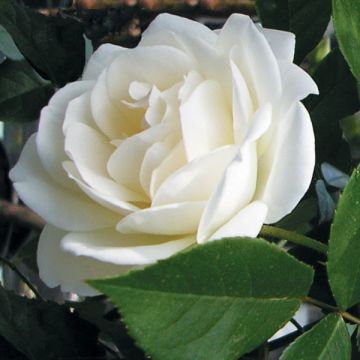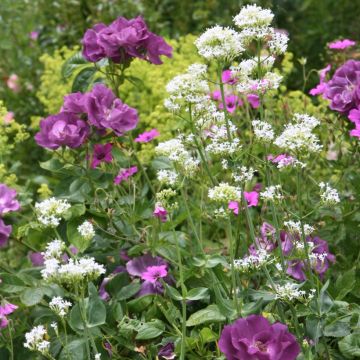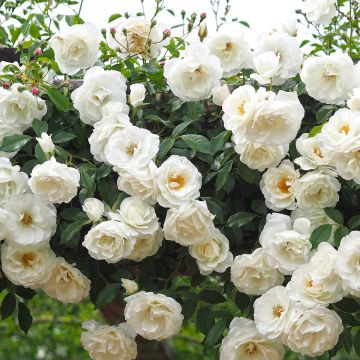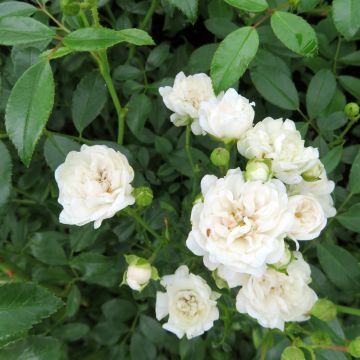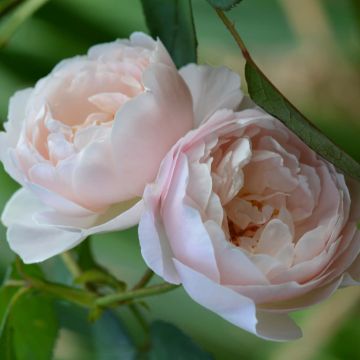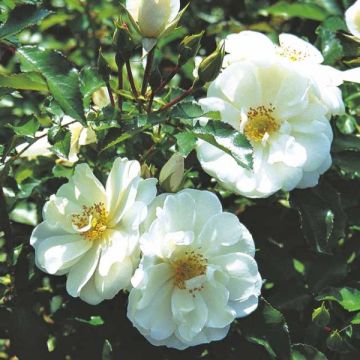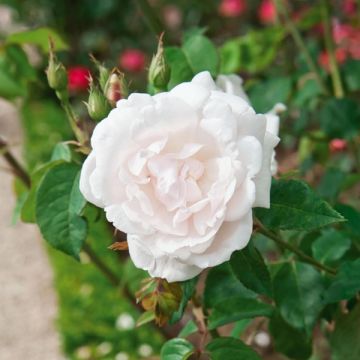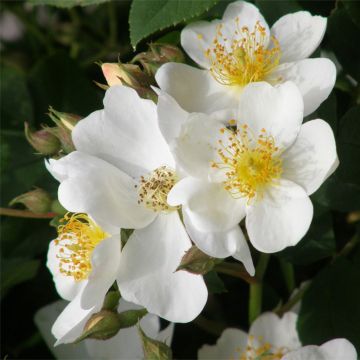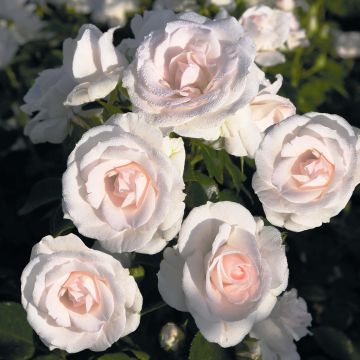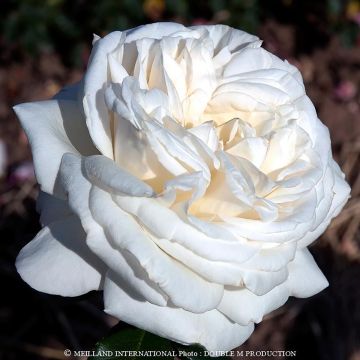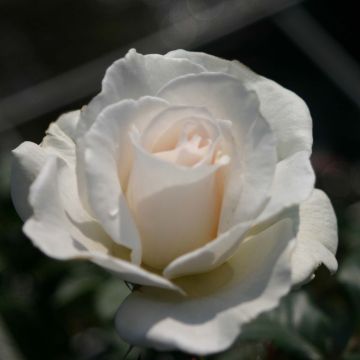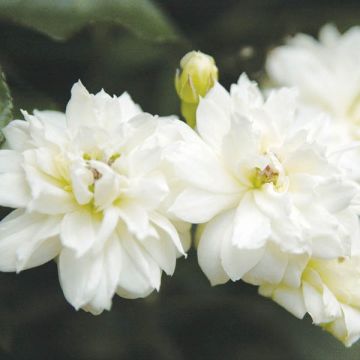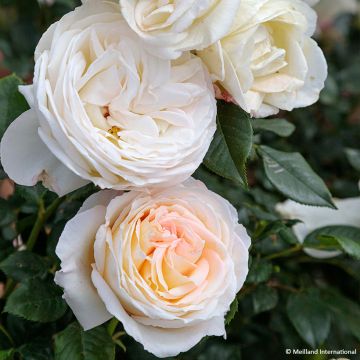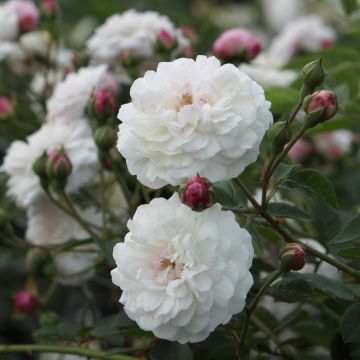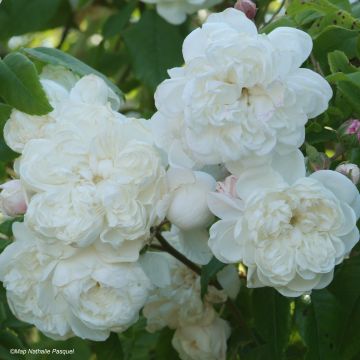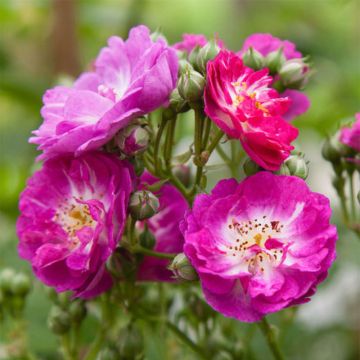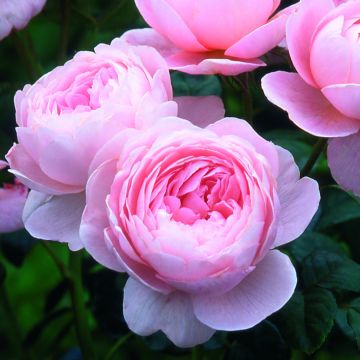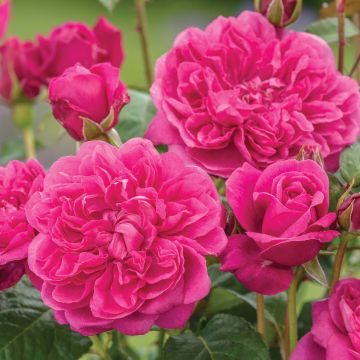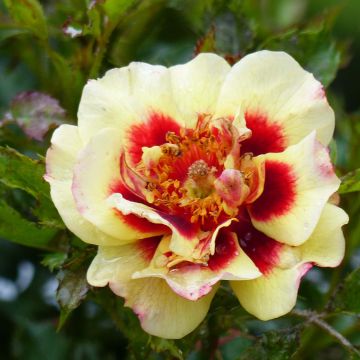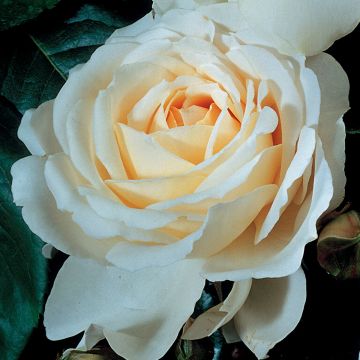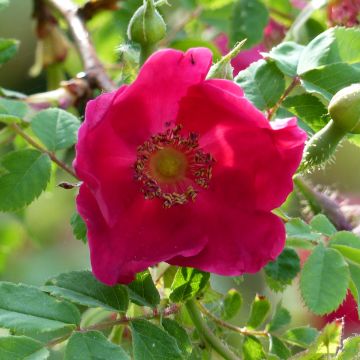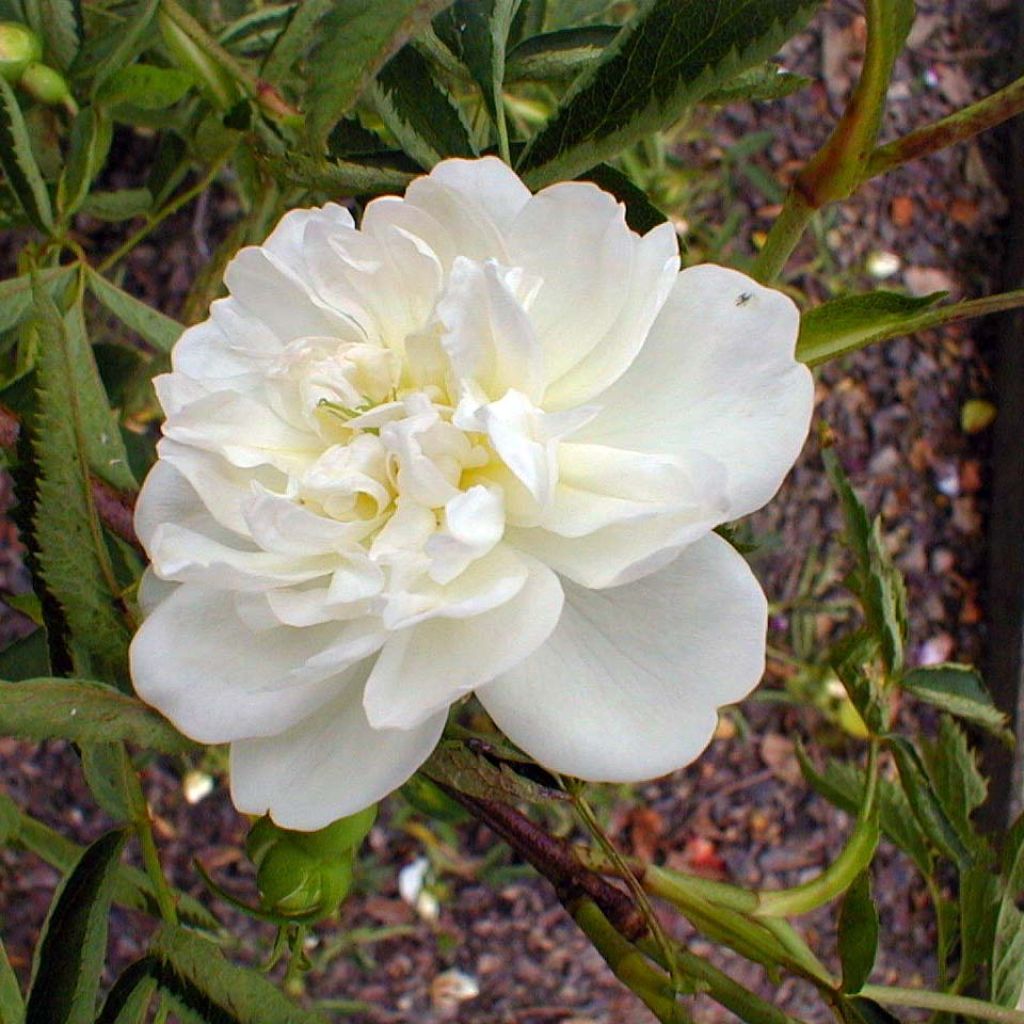

Rosa cannabifolia - botanical rose
Rosa cannabifolia - botanical rose
Rosa cannabifolia
hemp-leaved rose
Why not try an alternative variety in stock?
View all →This plant carries a 24 months recovery warranty
More information
We guarantee the quality of our plants for a full growing cycle, and will replace at our expense any plant that fails to recover under normal climatic and planting conditions.
From €5.90 for pickup delivery and €6.90 for home delivery
Express home delivery from €8.90.
From €5.90 for pickup delivery and €6.90 for home delivery
Express home delivery from €8.90.
Delivery to Corse prohibited: UE law prohibits the import of this plant from mainland France to Corse as part of the fight against Xylella fastidiosa. Please accept our sincere apologies.
More information
Does this plant fit my garden?
Set up your Plantfit profile →
Description
Rosa cannabifolia, formerly known as Rosa alba cannabina, is also called the White Hemp-leaved Rose, due to the appearance of its foliage which can resemble that of the hemp and its presumed ancestor, Rosa x alba or white rose, a hardy shrub native to Europe. This curious botanical rose is quite rare in cultivation and has, almost thornless stems and unusual foliage, consisting of long and narrow, greyish-green leaves. It flowers once with small semi-double flowers in late spring, slightly pinkish white and slightly fragrant. Truly undemanding, robust and hardy, this rose is satisfied with any sufficiently deep soil and a sunny or semi-shaded exposure.
Rosa cannabifolia (synonym Rosa alba var. cymbaefolia) is a rose that appeared spontaneously and was discovered by Flobert in 1807 in a Luxembourgish garden. Little described in literature, its origins are obscure, according to some it is probably derived from a mutation of Rosa x alba semiplena, while others lean towards a hybrid origin. It is a small, almost thornless shrub with a slightly stiff bushy habit. It easily reaches 1.20 m (4ft) high, even 1.50 m (5ft), and 1 m (0 and 3ft) in width, with a moderately rapid growth. The young shoots are blue-green and slightly thorny. The branches bear deciduous, opposite leaves, unlike other Alba roses. They are divided into thin and elongated, dark grey-green matte leaflets, folded along the central vein. Flowering occurs in May-June, depending on the climate. The flowers are semi-double to double, somewhat informal, and small. They often have a central 'pompon' that appears to be placed on a corolla of wider and flattened petals, similar to the flowers of some peonies. The centre of the flower is washed with yellow and green and filled with a few stamens. This rose seems to be quite susceptible to rust in humid climates.
The Hemp-leaved Rose is a beautiful botanical curiosity that is mainly appreciated for the visual appeal of its foliage. It can be planted in a flowering shrub bed or a large rose bed. It will fit well in a slightly wild garden or that of a curious gardener or a rose enthusiast. Finally, it is a very sturdy shrub once established.
While the passion for botanical roses and their direct hybrids is not widespread, it is justified, especially in poor soils or under difficult climates as these roses are not only the parents of our modern roses, but also generally more robust and reliable.
Report an error about the product description
Rosa cannabifolia - botanical rose in pictures
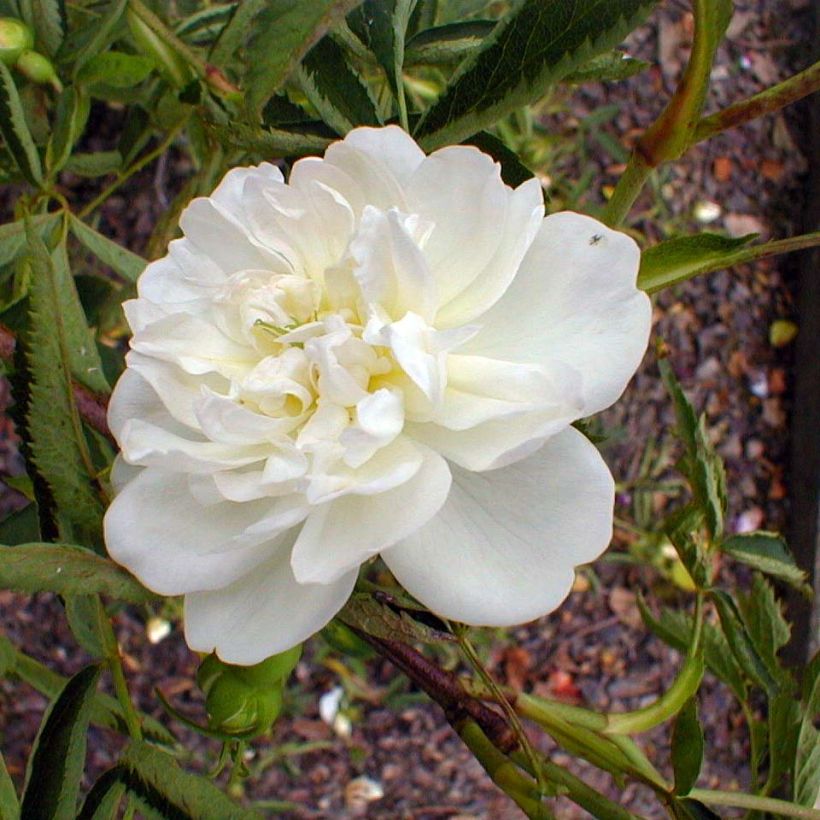

Plant habit
Flowering
Foliage
Botanical data
Rosa
cannabifolia
Rosaceae
hemp-leaved rose
Western Europe
Rosa multiflora (Wrapped bare root, 4L/5L pot)
Other Roses A to Z
Planting and care
Rosa cannabifolia prefers deep soils, regardless of their nature and pH. Once established, it tolerates dry and hot summers well like many roses, thanks to its deep root system. It is hardy down to at least -15°C (5°F). It likes a sunny exposure but appreciates partial shade or even shade in a hot climate. It thrives in all sufficiently sunny regions. Fairly disease-resistant, it can sometimes be susceptible to rust in humid climates. It adapts to all gardens, as long as the planting is done properly! While pruning is not essential, it may be useful to remove dead wood in winter and shorten some branches just after flowering. Avoid severe pruning that distorts the attractive shape of this bush.
Roses are often spotted or unsightly at the end of summer, but this is not a problem for their development. These spots are not harmful to the rose, it is a natural phenomenon.
Planting period
Intended location
Care
-
, onOrder confirmed
Reply from on Promesse de fleurs
Haven't found what you were looking for?
Hardiness is the lowest winter temperature a plant can endure without suffering serious damage or even dying. However, hardiness is affected by location (a sheltered area, such as a patio), protection (winter cover) and soil type (hardiness is improved by well-drained soil).

Photo Sharing Terms & Conditions
In order to encourage gardeners to interact and share their experiences, Promesse de fleurs offers various media enabling content to be uploaded onto its Site - in particular via the ‘Photo sharing’ module.
The User agrees to refrain from:
- Posting any content that is illegal, prejudicial, insulting, racist, inciteful to hatred, revisionist, contrary to public decency, that infringes on privacy or on the privacy rights of third parties, in particular the publicity rights of persons and goods, intellectual property rights, or the right to privacy.
- Submitting content on behalf of a third party;
- Impersonate the identity of a third party and/or publish any personal information about a third party;
In general, the User undertakes to refrain from any unethical behaviour.
All Content (in particular text, comments, files, images, photos, videos, creative works, etc.), which may be subject to property or intellectual property rights, image or other private rights, shall remain the property of the User, subject to the limited rights granted by the terms of the licence granted by Promesse de fleurs as stated below. Users are at liberty to publish or not to publish such Content on the Site, notably via the ‘Photo Sharing’ facility, and accept that this Content shall be made public and freely accessible, notably on the Internet.
Users further acknowledge, undertake to have ,and guarantee that they hold all necessary rights and permissions to publish such material on the Site, in particular with regard to the legislation in force pertaining to any privacy, property, intellectual property, image, or contractual rights, or rights of any other nature. By publishing such Content on the Site, Users acknowledge accepting full liability as publishers of the Content within the meaning of the law, and grant Promesse de fleurs, free of charge, an inclusive, worldwide licence for the said Content for the entire duration of its publication, including all reproduction, representation, up/downloading, displaying, performing, transmission, and storage rights.
Users also grant permission for their name to be linked to the Content and accept that this link may not always be made available.
By engaging in posting material, Users consent to their Content becoming automatically accessible on the Internet, in particular on other sites and/or blogs and/or web pages of the Promesse de fleurs site, including in particular social pages and the Promesse de fleurs catalogue.
Users may secure the removal of entrusted content free of charge by issuing a simple request via our contact form.
The flowering period indicated on our website applies to countries and regions located in USDA zone 8 (France, the United Kingdom, Ireland, the Netherlands, etc.)
It will vary according to where you live:
- In zones 9 to 10 (Italy, Spain, Greece, etc.), flowering will occur about 2 to 4 weeks earlier.
- In zones 6 to 7 (Germany, Poland, Slovenia, and lower mountainous regions), flowering will be delayed by 2 to 3 weeks.
- In zone 5 (Central Europe, Scandinavia), blooming will be delayed by 3 to 5 weeks.
In temperate climates, pruning of spring-flowering shrubs (forsythia, spireas, etc.) should be done just after flowering.
Pruning of summer-flowering shrubs (Indian Lilac, Perovskia, etc.) can be done in winter or spring.
In cold regions as well as with frost-sensitive plants, avoid pruning too early when severe frosts may still occur.
The planting period indicated on our website applies to countries and regions located in USDA zone 8 (France, United Kingdom, Ireland, Netherlands).
It will vary according to where you live:
- In Mediterranean zones (Marseille, Madrid, Milan, etc.), autumn and winter are the best planting periods.
- In continental zones (Strasbourg, Munich, Vienna, etc.), delay planting by 2 to 3 weeks in spring and bring it forward by 2 to 4 weeks in autumn.
- In mountainous regions (the Alps, Pyrenees, Carpathians, etc.), it is best to plant in late spring (May-June) or late summer (August-September).
The harvesting period indicated on our website applies to countries and regions in USDA zone 8 (France, England, Ireland, the Netherlands).
In colder areas (Scandinavia, Poland, Austria...) fruit and vegetable harvests are likely to be delayed by 3-4 weeks.
In warmer areas (Italy, Spain, Greece, etc.), harvesting will probably take place earlier, depending on weather conditions.
The sowing periods indicated on our website apply to countries and regions within USDA Zone 8 (France, UK, Ireland, Netherlands).
In colder areas (Scandinavia, Poland, Austria...), delay any outdoor sowing by 3-4 weeks, or sow under glass.
In warmer climes (Italy, Spain, Greece, etc.), bring outdoor sowing forward by a few weeks.

































